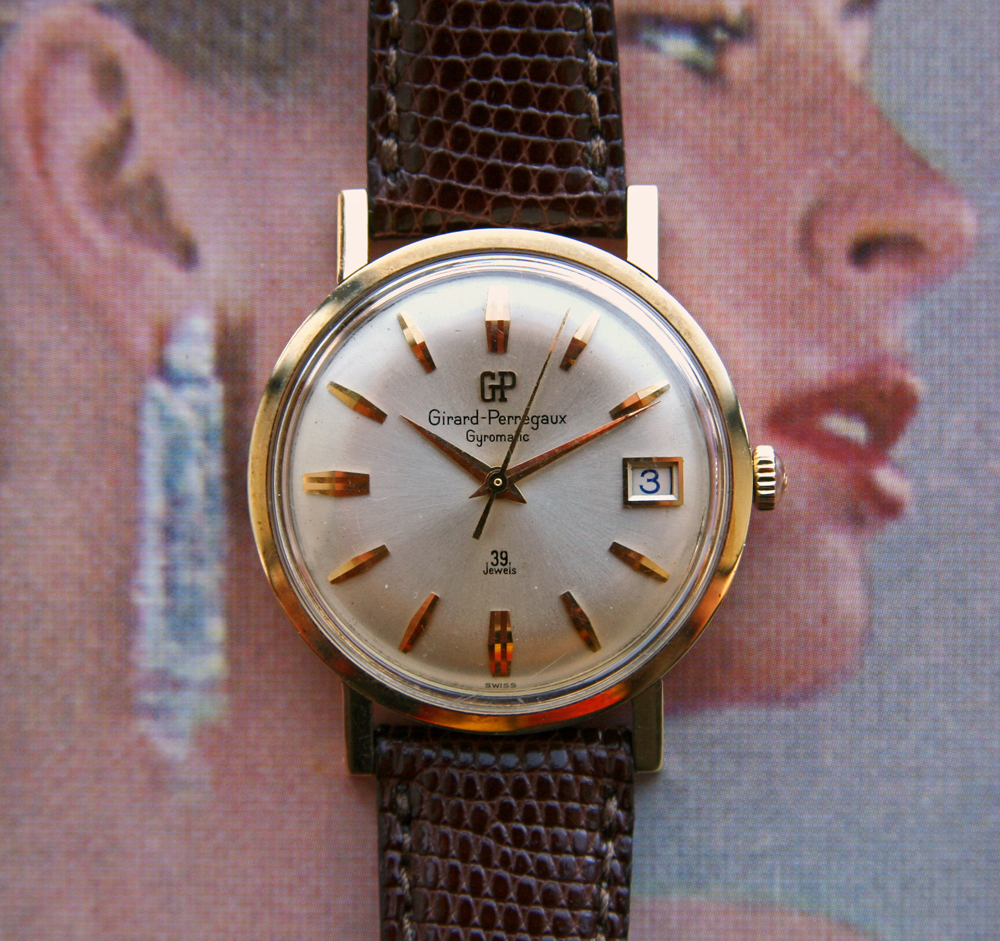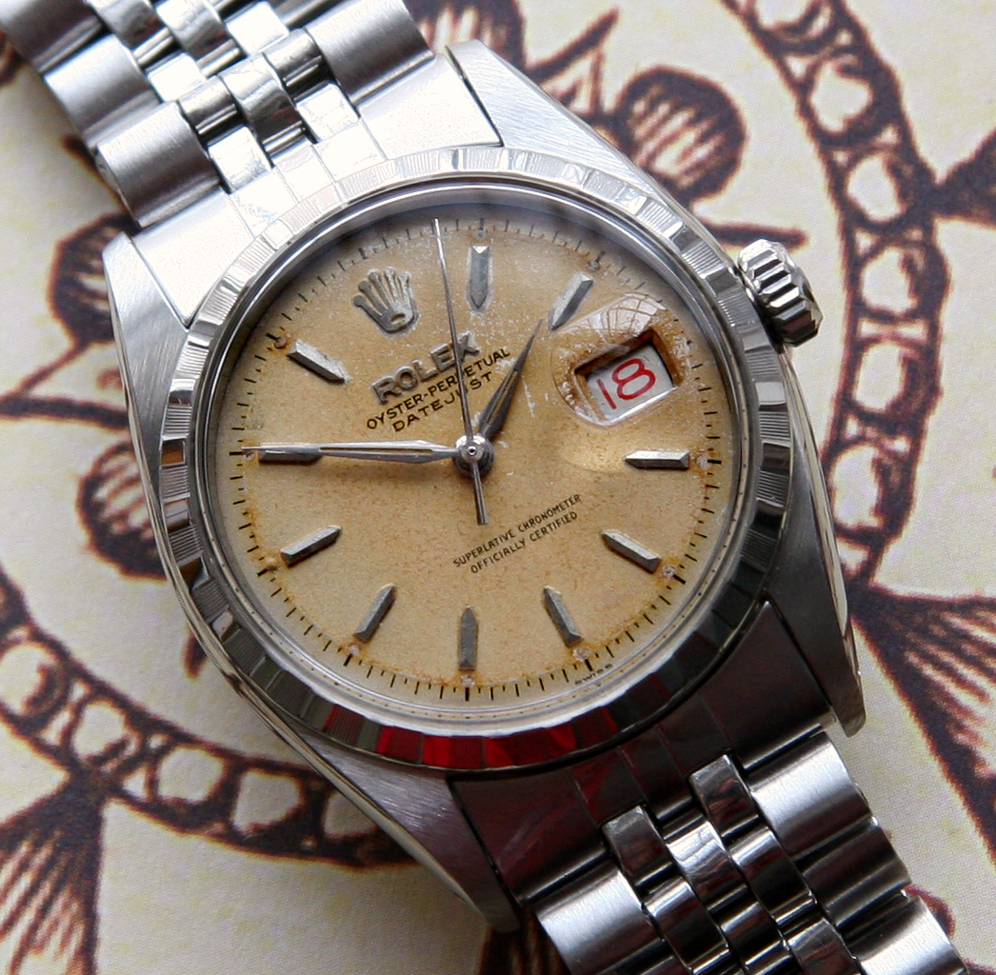Just a (not so) brief primer for the beginners on the kinds of things to think about when you start looking for a vintage watch.
First off, most of the watches that us vintage buffs are into have plastic crystals. This can be alien to a lot of people who are used to modern timepieces with their ultra-hard synthetic sapphire crystals. And yes, acrylic crystals are prone to scratches. But you can polish those out easily with some cotton balls and a neat little product called Polywatch. It’s a light abrasive that will smooth out scuffs & nicks. In a pinch, even toothpaste will do. Once you become accustomed to the warm look of an acrylic crystal you won’t be so hung up about it, I guarantee you.
In fact some watches are so iconic, like this mid-1960s Omega Speedmaster Professional (aka “The Moonwatch”), that the companies still put plastic crystals on them today despite the superior hardness of modern crystals. They know very well: don’t mess with a classic!
Secondly, what to buy? And my answer to this is: buy what you like. If you start getting into watches and visiting the watch forums you are going to see a lot of eye candy. You’ll also get other owners’ perspectives on what they feel is valuable and worth collecting. Not to mention there are some very knowledgeable people out there who can tell you why one watch’s movement is vastly superior to another’s. That is all well and good and I absolutely advocate arming yourself with as much information as possible before you make a purchase. But there is lots of fun to be had across all price ranges and quality levels in the vintage watch world. So bring your own tastes to the pursuit rather than just mimicking someone else’s. If you’re just beginning, I say begin at the beginning. Buy something reasonable and see where you go from there.
A sweet little gold dress watch like this 1960s Girard-Perregaux “Gyromatic” in solid 14k gold can give you that Mad Men style you’re looking for without breaking the bank, around $800-1000 give or take (GP were not the high end brand back in the day that they have evolved into). A steel version of this watch is even less.
Third point is: whatever you buy, try to buy the best example you can. If the dial is very spotted or damaged, pass it by. If the case has been heavily polished and/or there is obvious damage and heavy scratches, move on to the next example. Truly rare vintage watches are, well, a rarity. More than likely there are literally thousands of the exact same watch you are looking to buy out there in the world. So why settle for a shitty example? Even if it costs you a bit more, always stretch for quality. It’s the name of the game and you’ll be glad you did in the long run, especially if you decide to sell it one day. Remember, you’re going to be looking at this watch throughout the day so you want to be happy when you look down at your wrist, not noticing glaring flaws. Which is not say that patina and WABI cannot be beautiful–just look at how this 1950s Rolex Datejust has aged:
It really does come down to personal taste and how much “character” you feel you can live with.
Another thing to keep in mind is that most vintage watches will probably need a service either sooner or later. After all, mechanical, non-battery operated watch movements are like little engines with many small moving parts. Unless the vendor you’re purchasing from explicitly guarantees the movement for a said period of time after purchase, figure on a movement service as part of your purchase price. This can usually run between $150-300 depending on the complexity of the movement and the watchmaker. Just like buying a used car, you can usually count on having to put some money back into a used watch to get it up to snuff. Factor that into the price when calculating how far to stretch.
Finally the question of where to buy. You can take your chances on eBay but do your homework first. There are still a lot of shenanigans that go down there and there are also a ton of counterfeit and put together pieces that should be avoided. Best to run anything you’re considering by one of the good collectors’ forums before you make the leap. Head to Timezone or Watchuseek and chances are they will have a specific sub forum for the brand you’re considering or at the very least run it by their Vintage sections by posting a picture of your potential purchase. There are a lot of knowledgeable people at these places and it behooves you to take advantage of their wisdom. And really the best places to buy a vintage timepiece are on these very sites’ Sales Corners (Timezone SC here, WUS Sales here). They are self-policing to a large degree and while they are not scammer free, it’s fairly easy to check references for the sellers here, as to a large degree they are regular participants in the watch community. Plus, the prices are usually the most fair. You can also explore the brick and mortar shops in your area–prices will often be higher (they have overhead like rent, remember) but sometimes you will find good deals and nice pieces and often what they sell will come with a warrantee, which is a plus.
More to come but that’s enough to chew on for now. Happy collecting!




Lovely read Tomvox1! Guess who now owns that very 6605.. I’m loving it to bits. Date wheel has left the building at a previous owner though I suspect.. but still – killer watch.
Ah ha! Well that’s great that you have it now, Dale. It’s a great piece with wonderful character. And you could shave with those lugs they are so sharp. 🙂 Thanks for your comment and I hope you’ll visit us often! All the best, Tom